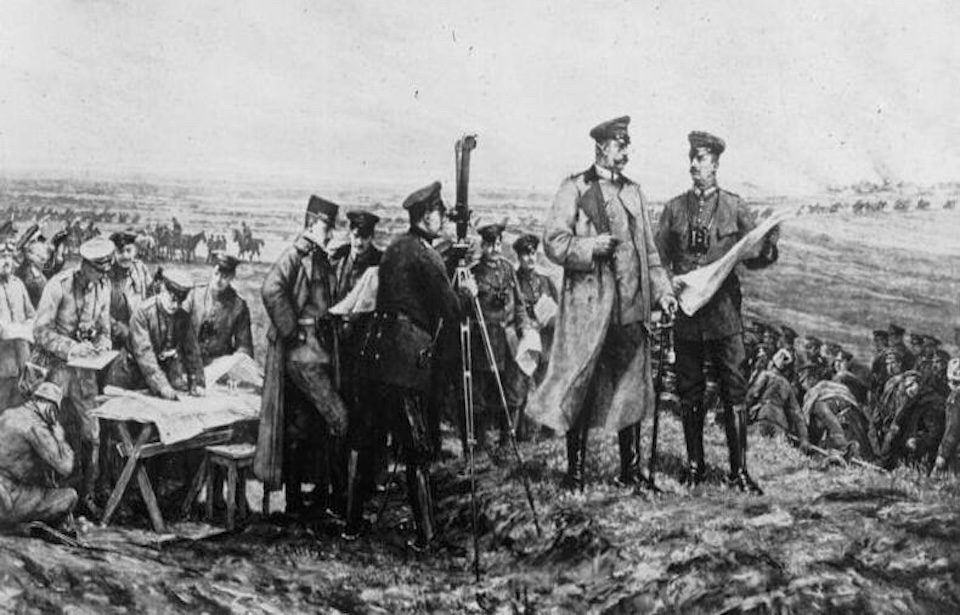Five centuries before World War I, the Teutonic Knights faced a devastating loss at the Battle of Tannenberg (Grunwald) to Slavic and Lithuanian forces. Yet, in 1914, the Germans achieved a decisive victory in the same area, defeating the Russian Second Army in just four days.
Acknowledging the historical importance, German leaders named this victory “Tannenberg” to honor the location.
Early days of World War I
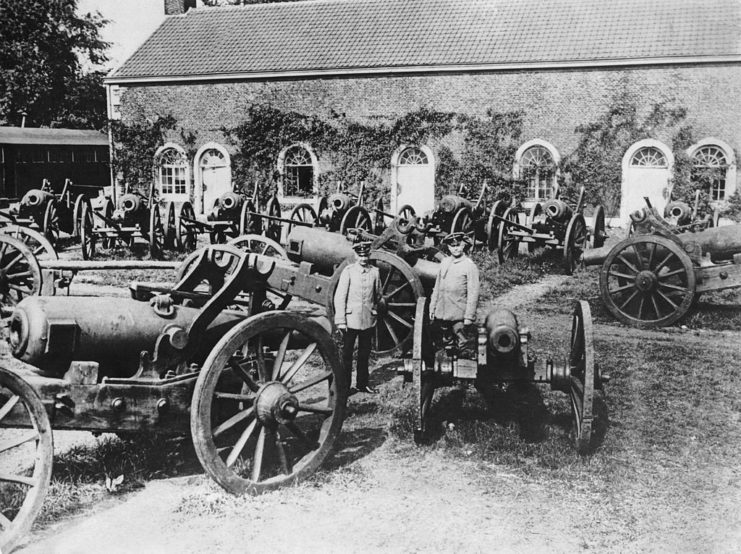
Germany initiated its involvement in the Great War through the execution of the Schlieffen Plan, shaped by the insights of Field Marshal Alfred von Schlieffen. This grand design envisioned a sweeping German invasion of France and Belgium, rallying the support of Germany’s allies before advancing into France via the Netherlands.
The primary objective was to defeat the French Third Republic. Simultaneously, a smaller German force would head eastward to confront potential threats from Russia until reinforcements could join them. The German Army, boasting a total strength of 1,191 battalions in 1914, allocated the majority of its forces to the Western Front for the campaign in France, while the Eighth Army of East Prussia, constituting only 10 percent of Germany’s military might, directed its attention toward the Eastern Front.
Concurrently, France swiftly mobilized its forces, launching an immediate counteroffensive to repel the advancing Germans. Neutral Belgium, after two weeks of fighting in the Battle of Liège – the inaugural official battle of WWI – succumbed to the German onslaught, providing a strategic corridor for their invasion.
Anticipating support from the British Expeditionary Force (BEF) and their Russian allies, France recognized the time required for Russia to fully mobilize. Hindered by a limited and predominantly single-tracked railway network (75 percent of Russian railways fell into this category), it took a considerable 60 days for sufficient divisions to be actively engaged in the conflict.
Battle of Gumbinnen
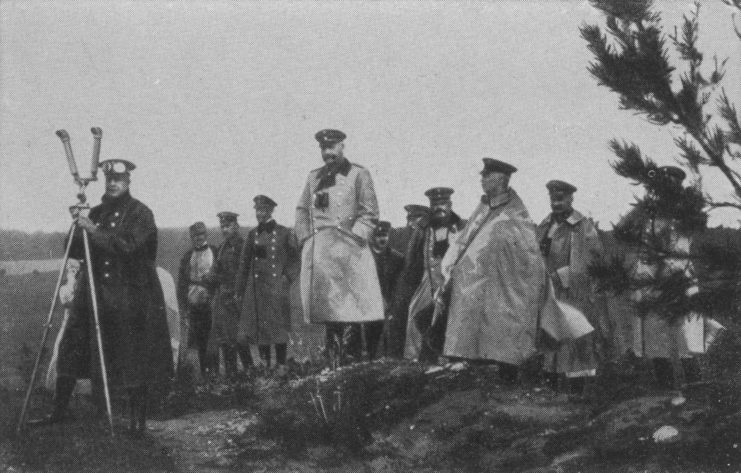
It quickly became evident that the Russians had outflanked the Germans, sending two armies into East Prussia. In response, Germany ordered von Prittwitz to engage the Russian 1st Army Corps at the Battle of Gumbinnen on August 20, 1914. Both sides suffered heavy casualties, and as a second Russian force approached, von Prittwitz contemplated a retreat. However, his superiors insisted that retreat was not an option.
Consequently, von Prittwitz was replaced by two prominent military figures: General der Infanterie Erich Ludendorff and Field Marshal Paul von Hindenburg, who assumed control of the Imperial German Army on the Eastern Front. Under their command, the Eighth Army prepared to confront the unready Russians with every possible advantage.
Was Russia doomed from the start?
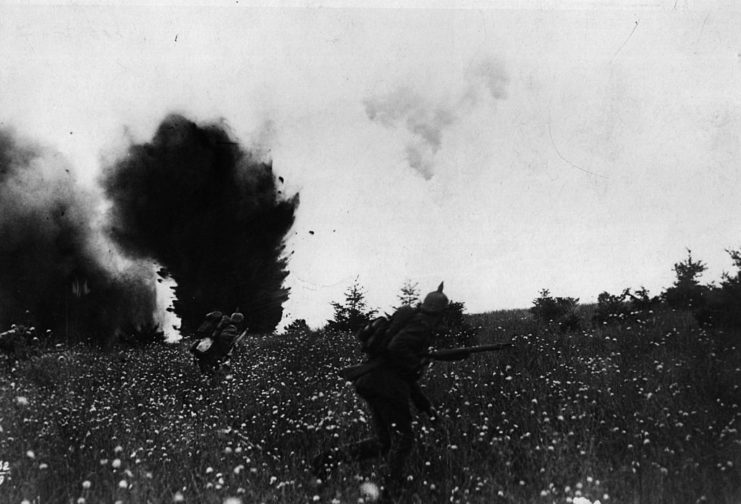
The events that transpired before the Battle of Tannenberg likely determined Russia’s fate even before the fighting began. The unseasoned Russian Army made a major mistake in its radio communications. Orders were sent over open radio frequencies, and while they were encoded, the Germans easily intercepted and took advantage of these communications.
The National Security Agency (NSA) points out that the Battle of Tannenberg was the first time in history where the interception of enemy radio communications had a real impact.
One intercepted message disclosed that the 1st Army Corps was not moving toward the Eighth Army as anticipated but was instead heading north toward Königsberg, Prussia, with the Second Army closely following. The two armies were separated by the 50-mile expanse of the Masurian Lake District, which hindered their advance toward Königsberg.
Surrounding the Second Army
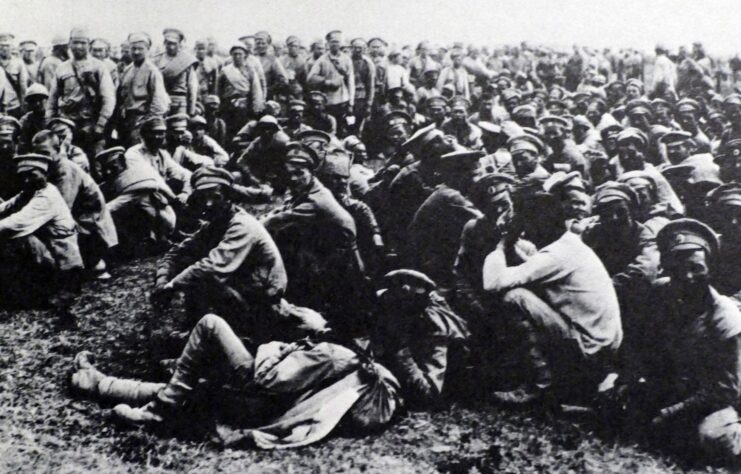
Using the intercepted radio messages, Ludendorff, a military theorist, came up with a strategy to attack the 2nd Army south of the Masurian Lakes. The 2nd’s commander, General of the Cavalry Alexander Samsonov, was already hindered by a slow supply chain, poor communication and the difficulty of navigating a large force with heavy artillery through the are’s impossible terrain. Soon, he and his men found themselves completely surrounded by the Germans.
“Imagine this Russian army as a bulge pressing into Germany and the Germans strike at a point where the bulge begins and cut off the vast majority of the Russian forces in the middle,” explains military historian, Jay Lockenour. “Because of communication problems, the Russian commanders didn’t know that a major attack on their flank was underway until half a day too late.”
Samsonov’s men were spread out over a 60-mile stretch, with the center, right and left wings separated – practically inviting the Germans to attack both wings. Meanwhile, the 1st Army Corps, led by General of the Cavalry Paul von Rennenkampf, was in no rush to come to the 2nd’s aid. Instead, a lapse in communication failed to urge him to pick up the pace and change his focus from Königsberg to the Masurian Lakes.
On August 26, 1914, Ludendorff ordered General der Infanterie Hermann von François and his I Corps to attack and break through the Russians’ left wing.
Who won the Battle of Tannenberg?
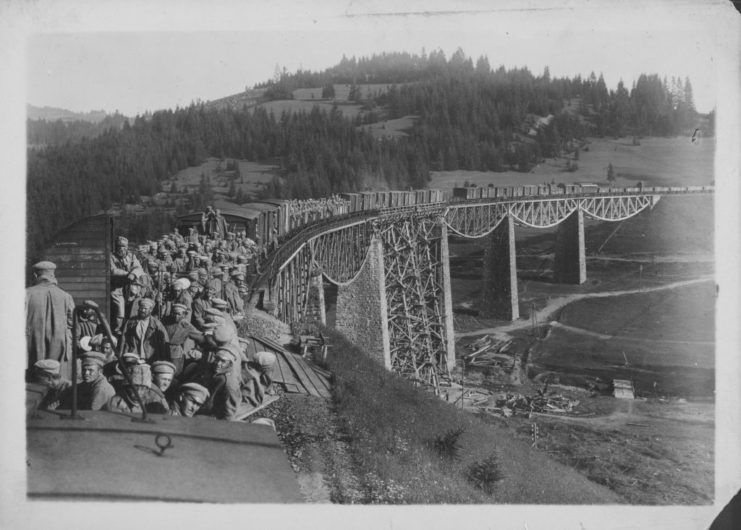
The height of the Battle of Tannenberg occurred on August 27, with the German heavy fire focused on the left wing. Soon, Russian troops began to flee across the frontier, toward Neidenburg, and von François ordered his men to hold the road from there to Willenberg.
They formed a barricade across the line of retreat as Russian soldiers flowed in and out of the nearby woods. The Germans secured the rear group, who were exhausted from lack of rest and food. The hungry and exhausted men accepted their defeat, surrendering to the Germans in the tens of thousands.
Even Samsonov found himself wrapped up in the flurry of retreating men. Unable to stop the madness, he turned around and rode south, only to get lost in the dense forest. His absence had gone unnoticed until the early hours of August 30, when a lone shot rang out from the woods. Rather than admit to his failure, Samsonov shot himself with his officer’s pistol.
Even though the German contingent of 150,000 men was outnumbered by the Russians, who had 230,000, they still managed to nearly eradicate the entire 2nd Army. When all was said and done, only 10,000 returned to Russia. Between 30,000-78,000 were killed or wounded in the battle, while another 92,000 were taken as prisoners of war (POWs).
Want War History Online‘s content sent directly to your inbox? Sign up for our newsletter here!
Battles continued between the Germans and the Russian 1st Army Corps, who were also defeated and mostly destroyed. After the resounding success of the campaign, German Kaiser Wilhelm II named the battle after Tannenberg, a nod to the 1410 engagement that eviscerated German knights.
